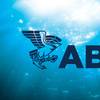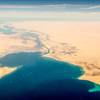Whale Watch: Improved Economy and Passenger Comfort
They have maintained it as an environmentally respectful operation out of concern for the future of the whales and for their customers. The are members of the Northwest Whale Watcher Operators Association (www.nwwhalewatchers.org ) and adhere to that group’s guide lines for operating power boats in the vicinity of whales. On their own imitative they also began burning bio-diesel in the boat’s two-cycle main engines. Now they have gone a step further and replaced the Western Prince’s aging engines with a pair of Cummins’ new Tier II compliant QSL9 engines from Bellingham’s Tri-County Diesel Marine. These 400 bhp 9-litre 6-cylinder engines have evolved from the well-proven 6CT8.3 engine to meet the stringent requirements of the US environmental protection agency for reduced emissions. The electronically controlled engines are also available at a heavy-duty rating of 326 bhp at 1800 rpm or continuous duty rating of 281 bhp at 1800 rpm. With his balance between running out to find the whales and idling while watching them, Ivan’s run times are well within the medium continuous definition of up to 6000 hours per year usage with up to six out of 12 hours at the fully rated RPM. (www.cmdmarine.com/qsl.html ) While the Cummins QSL9 meets the Tier II emission requirements it also has other significant advantages for a boat like the Western Prince II that routinely takes 30 passengers on natural history tours. By incorporating the latest engine technology the new engines add to passenger comfort while generating bottom line savings. A high-pressure common rail fuel system virtually eliminates start up white smoke and black smoke, improves fuel economy and significantly reduces noise. The engine employs a new cylinder head with four valves per cylinder, which allows the engine to breathe easier for increased acceleration and torque.
On sea trials the 46 x 14.5-ft. Western Prince II achieved a top speed of 24 knots at 2100 rpm, which is the maximum on the tachometer for the medium continuous duty rating on these engines at their 400 hp rating. With the boat’s tired old engines the top speed was only about 17 knots. Ivan expects to cruise at that speed using only1700 to 1800 rpm with 30 passengers and three crewmembers onboard. This will save both time and fuel when doing the whale watch tours. While size of these savings will be determined when the boat is in service this summer, sea trials showed the 37,000-lb. vessel making 18 knots at 1700 rpm with the two engines burning just 23-gallons per hour total. While Ivan Reif chose his new engines with the care of a successful businessman, he couldn’t resist a smile as he commented after the sea trials, “It is totally different, now it is actually planing!”








